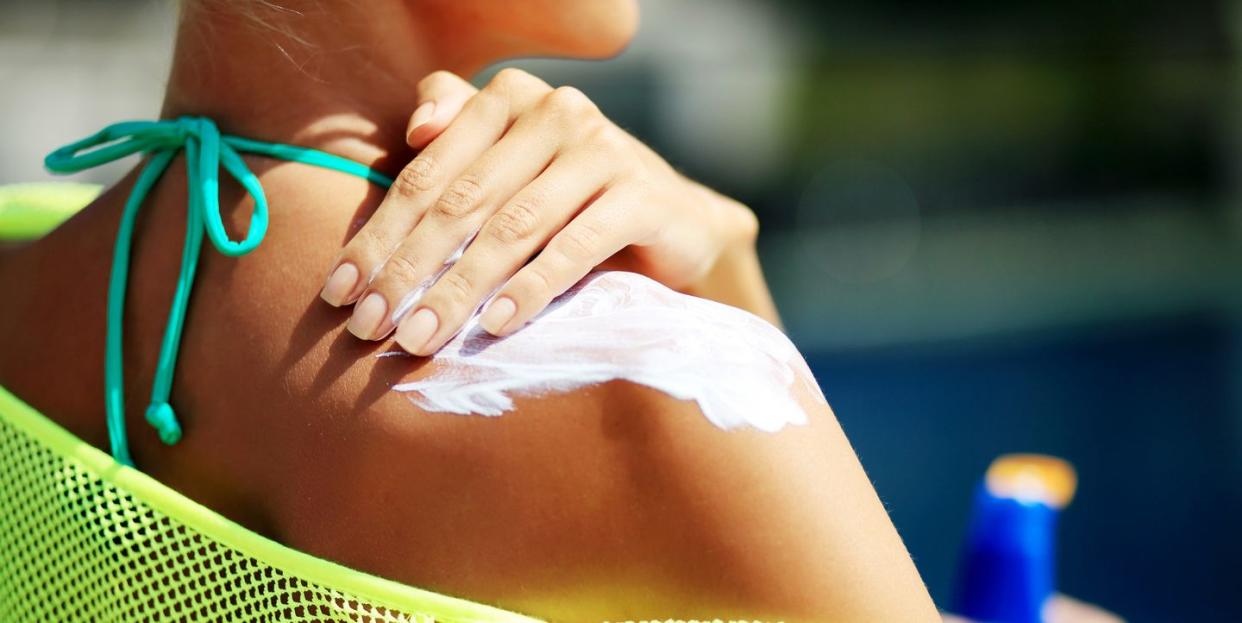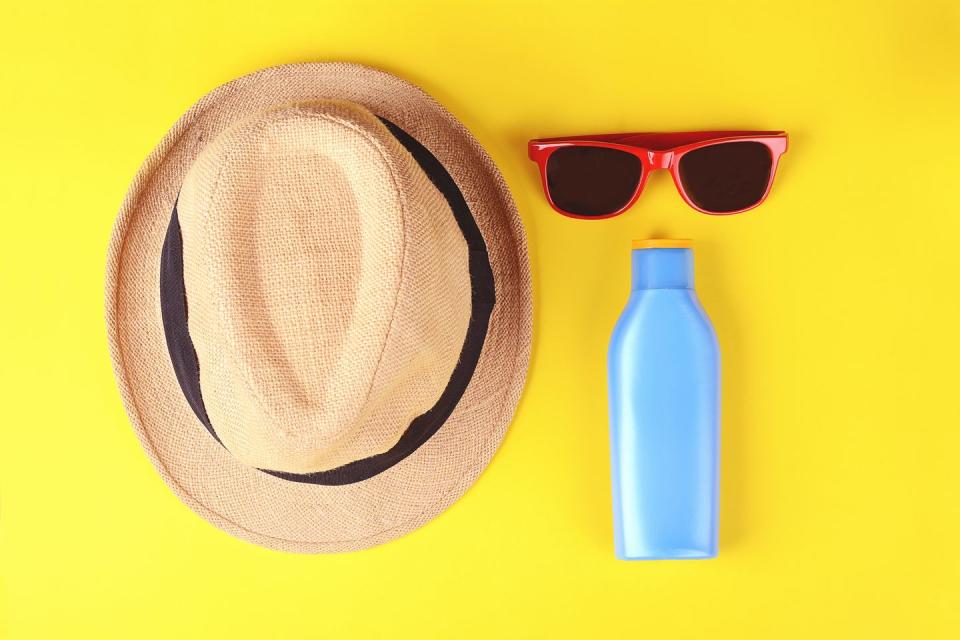10 fast and effective sunburn treatment tips

Badly sunburnt after a day in the sun? If your skin is red, sore and tender to touch after even a short period of time in direct sunlight, chances are you have sunburn.
Dr Roger Henderson offers his expert tips on how to minimise the pain and redness from severe sunburn and how to ensure you protect your skin from the sun's harmful rays in the future:
What is sunburn?
Sunburn is essentially an inflammatory reaction to ultraviolet (UV) radiation damaging the outer layers of the skin. Sunburn occurs when the skin overheats in the sun, becomes red and painful and may later peel or blister.
While sunburn is often short-lived and mild, it's still important to always protect your skin from the sun's harmful rays. We now know that repeated episodes of sunburn can have long-term consequences – your risk of developing the potentially fatal skin cancer known as melanoma doubles if you have a history of five or more significant sunburns.
Longer term risks associated with sun overexposure include skin cancer, eye problems – such as photokeratitis or cataracts, and premature ageing of the skin.

Sunburn symptoms
Sunburn can cause red, hot skin that feels painful and hot to touch and in severe cases blistering, swelling of the skin and fever. If you have heatstroke you may also experience symptoms such as dizziness, headaches or feeling sick.
It's important to remember that there is no level of 'good' sunburn. Any sunburnt skin, however mild, is a sign of skin damage and can increase the risk of premature skin ageing and skin cancer.
Sunburn risk factors
Anyone who is exposed to UV light is at risk of getting sunburn, although some people are more vulnerable than others. The following people should take extra care in the sun:
If you have pale, white or light brown skin
People with freckles and red or fair hair
Babies and small children
If you have a family history of skin cancer
People who work outdoors
People who play a lot of sport outdoors
If you tend to burn rather than tan
If you have a number of moles
If you have skin problems relating to a medical condition
If you are not used to the sun
If you are visiting a hot country where the sun is particularly intense
There is some evidence that even one significant episode of sunburn with skin blistering in childhood or adolescence more than doubles your chances of developing a melanoma later in life, so always ensure children wear sunblock or sunscreen with a high sun protection factor (SPF) and keep babies out of the sun.
How long it takes for your skin to burn in the sun varies from person to person. If you're not sure, visit The Cancer Research UK website to find out your skin type and check if you are at an increased risk of burning.
10 ways to treat sunburn
You can usually treat mild sunburn at home. If you're in pain and feeling uncomfortable, the following tips may help to relieve symptoms until your skin heals. If symptoms persist, you feel unwell or have any serious concerns about your sunburn, seek medical attention.
1. Stay out of the sun
If you or your child has sunburn, get out of the sun as quickly as possible and stay indoors or in shady areas. Cover up the sunburnt skin and avoid all sunlight until the sunburn has fully healed.
2. Moisturise the skin
Apply plenty of lotions or cream to moisturise the sunburnt skin, especially if it is hot to touch and when it starts peeling. Water based lotions and cream provide a better cooling effect on the skin. Avoid petroleum or oil-based creams, which can prevent heat and sweat from escaping and make the burn worse.
3. Drink plenty of water
If you become dehydrated this can have a drying affect on your skin which may exacerbate your sunburn symptoms, so keep drinking lots of water to stay hydrated and cool you down.
4. Take a cool shower
Cool down sunburnt skin by having a cold shower/bath and patting the skin with a cold wet sponge or flannel.
5. Apply a cold compress
Applying a cold compress such as a wet flannel to the affected area may help cool the burn and ease discomfort.
6. Use aloe gel
Lotions or gels containing aloe vera can also soothe sunburnt skin following over-exposure to the sun. Aloe vera moisturises and replenishes dry skin and has antibacterial properties which help to prevent peeling skin.
7. Try aqueous calamine cream
Aqueous calamine cream may also help with itching or soreness. After application the calamine evaporates, which produces a cooling effect that helps distract you from the sunburn.
8. Don't pick or pop blisters
Resist the urge to pick or pop any blisters that may form on sunburnt skin. A blister protects the skin underneath and reduces the risk of it getting infected.
9. Take painkillers
If you are in pain and feeling uncomfortable or struggling to sleep at night, the pain of sunburn can be treated by taking painkillers such as paracetamol or ibuprofen which are available to buy from a pharmacy.
10. Apply a hydrocortisone cream
If the skin is very inflamed and red using over-the-counter hydrocortisone cream for a couple of days may help. Hydrocortisone reduces inflammation and relieves redness and itchiness. If you need help, ask your pharmacist for advice.

When to seek medical attention for sunburn
If you feel unwell or have any concerns about your sunburn contact your GP or call the NHS on 111 for medical advice.
Signs and symptoms of severe sunburn include the following:
Burn over a large area of skin
Blistering or swelling of the skin
If you feel confused and unwell
If you experience dizziness, headaches and nausea
If you experience chills
If you have a high temperature of 38C (100.4F) or above
⚠️ Seek urgent medical assistance if a young child or baby has sunburn, as their skin is particularly fragile.
Sunburn prevention tips
The best way to avoid sunburn is to minimise the amount of time you spend in the sun. The following tips can also help:
✔️ Wear suitable clothing
To avoid sunburn opt for a wide-brimmed hat that shades the face, neck and ears, long-sleeved tops, trousers or long skirts and sunglasses with wraparound lenses. Alternatively carry a sun protective parasol.
✔️ Seek out shade
Avoid direct sunlight and seek out shaded areas. However you can still suffer from the effects of the sun on the skin on a cloudy day, as ultraviolet rays can penetrate through cloud. This also means that even without sunburn, skin damage may still occur so always wear sunscreen.
✔️ Apply sunscreen
Wear sunblock or sunscreen with a high sun protection factor (SPF). When buying sunscreen, make sure it's suitable for your skin and blocks both ultraviolet A (UVA) and ultraviolet B (UVB) radiation. The sunscreen label should include at least 4-star UVA protection and SPF15 sunscreen to protect against UVB.
✔️ Don't forget to reapply
The average adult requires around 35ml or 6 to 8 teaspoons of sun lotion to provide adequate sun protection. If you plan to be out in the sun long enough to risk sunburn, sunscreen needs to be reapplied frequently and according to the manufacturer’s instructions. This includes straight after you've been in water and after towel drying, sweating or if it has rubbed off.
✔️ Avoid the midday sun
In the UK, the risk of getting sunburnt is highest from March to October, particularly from 11am to 3pm, when the sun's rays are strongest. The ultraviolet index is a marker of how potentially damaging the sun may be that day. A high UV index means that unprotected skin will burn faster or more severely so avoid going into the sun when it is at its strongest (a good tip here is that this is when your shadow is shorter than you are) and always protect your skin when going outside.
✔️ Keep babies and small children in the shade
Babies under six months of age should never be exposed to the sun. Babies older than six months should be protected from the sun, and wear UV-blocking sunglasses to protect their eyes.
Last updated: 19-04-2021
You Might Also Like


